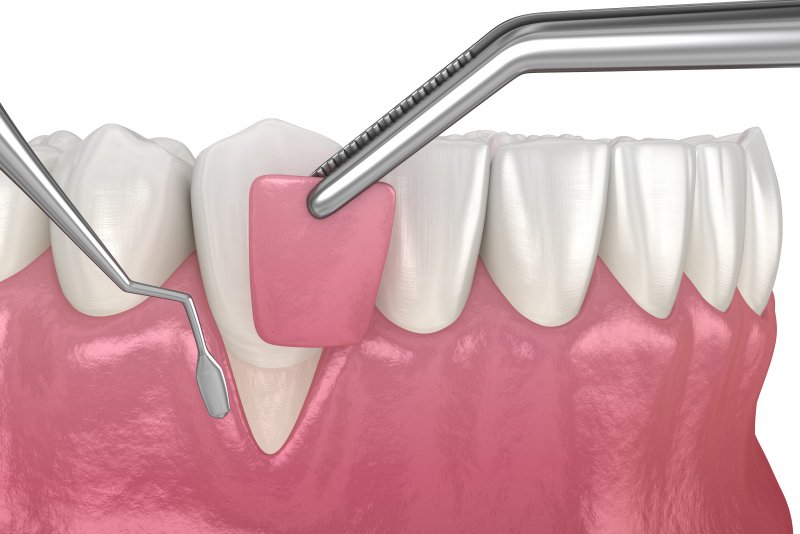Gum Grafting as a Solution for Periodontal Disease
February 19, 2021

When you’re told that you need gum disease therapy, you’ll probably expect a series of treatments that focus on killing harmful bacteria. Naturally, this is an extremely important step, but it doesn’t end there. Your periodontist in Huntington Beach also needs to address the damage that gum disease has already done to your mouth. In this post, you’ll discover how a simple yet effective technique known as gum grafting can help restore the health of your smile.
What is Gum Grafting and Why Is It Performed?
A gum graft simply involves placing new tissue in an area where little to no gum tissue remains. The grafted tissue is normally taken from your own body, but sometimes it might come from a separate donor. As the area around the grafted material heals, new blood vessels form, and soon the new tissue is fully part of the mouth.
A gum graft is recommended in cases where excessive gum recession has occurred. Gum recession is when the tissue that normally covers the tooth roots starts to pull away. This leaves the more vulnerable parts of the tooth exposed, and it can even lead to irreparable bone damage that could easily result in tooth loss. Since the recession is very gradual, you might not notice it’s happening until it’s at a very advanced stage.
Gum recession is one of the most notable consequences of untreated gum disease, which is why it’s often part of a periodontal treatment plan. You’ll likely know if you need the treatment done if your teeth are looking longer than normal, but your periodontist will need to check your mouth in order to confirm it first.
How Does the Procedure Work?
There are actually different kinds of gum grafts that can be performed based on the extent of the damage already done. The most common kind is a connective tissue graft. The material for this procedure is taken from the roof of your mouth, and it is stitched directly to the area where recession has occurred. However, if you still have a healthy amount of gum tissue around the area where recession has occurred, then a pedicle graft might be performed instead. This will involve taking the gum tissue you still have and redistributing it so that it covers the exposed parts of the tooth. Whatever the case, the procedure can be completed in a relatively short amount of time, and your periodontist can teach you the best practices for taking care of your graft until it has completely healed.
Grafting gives your gums a fresh start after gum disease, allowing them to continue protecting your teeth from further damage. If you start noticing possible warning signs of gum recession in the mirror, get in touch with your periodontist right away.
About the Author
Dr. Justin Braga fell in love with dentistry while studying at the University of Washington. He later decided to specialize in periodontics after being mentored by a periodontist at the VA Palo Alto General Practice Residency. He has over 15 years of dental experience and is proud of how his specialized knowledge allows him to help patients suffering from gum disease with procedures like gum grafting. To schedule a consultation at his practice, Huntington Beach Periodontics & Dental Implants, visit his website or call (714) 587-9094.
No Comments
No comments yet.
RSS feed for comments on this post.
Sorry, the comment form is closed at this time.
